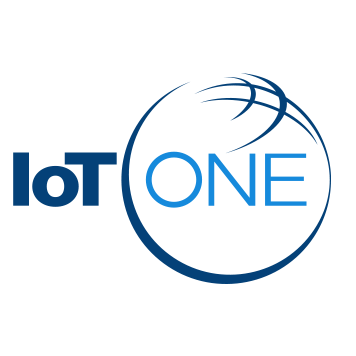Overview
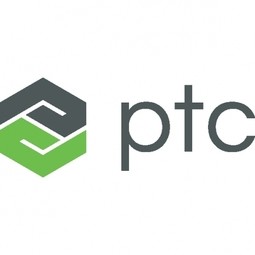 |
PTCUnlocking Physical Digital Convergence |
| United States | |
| Boston | |
| 1985 | |
| Public | |
| NASDAQ: PTC | |
| $1-10b | |
| 1,001 - 10,000 | |
| Open website |
| ThingWorx, Kepware (PTC) | |
IoT Snapshot
Technology Stack
Case Studies
 |
Transformation for IoT Business Model in Connected Industrial Vehicles
CNH Industrial wanted to put IoT-enabled viechles onto the market. Whether monitoring a single machine or integrating an entire fleet, operators are able to track the status, speed, and movement of machines and their performance and also receive alerts on issues that may require service by a qualified technician to improve uptime and overall effectiveness of the vehicle. |
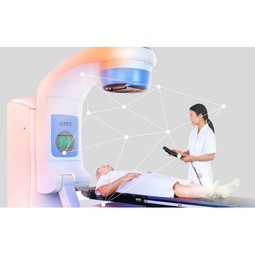 |
Reducing Mean Time to Repair by 50 Percent with SmartConnect
Varian has a variety of medical instruments and cancer treatment systems that support today’s leading-edge treatment modalities with Intensity Modulated Radiation Therapy (IMRT) and Image Guided Radiation Therapy (IGRT). These treatment systems are deployed at more than 1,000 hospitals and clinics worldwide. Traditionally, system and equipment problems have required one or more service technicians to diagnose and resolve issues at the hospital site, resulting in higher costs and lost patient treatment time. For a typical treatment device, the loss of one day’s treatment time can result in 35 patients missing their treatments, which is something hospitals and patients cannot afford. Problem resolution can be complicated if incorrect or incomplete information has been provided by the operator, and also in cases where the problem cannot be recreated once the technician is on site. Operators of the Varian Acuity™ imaging system, an integrated simulator and verification tool for testing patient treatment plans, occasionally require expert assistance. Image quality optimization, solving operational problems, and tuning system performance can cost time and money for Varian and their customers. |
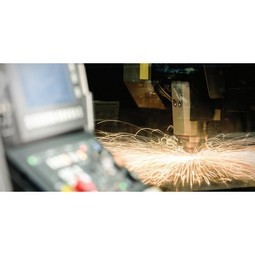 |
Providing Proactive Support with Intelligent Smart Services
“For us to maintain low costs and high customer satisfaction while providing improved response times, we need a better, faster way to resolve issues beyond dispatching onsite technicians,” explains Mark Hessinger, Executive Director of Worldwide Service at Gerber Scientific. Gerber faces a continuous need to train new personnel as they are brought into the service organization. A change in strategy for service allows Gerber to build a stronger technical support organization and a more efficient process to bring new field service engineers up to speed. “We have a lot of tenured employees in North America and Europe,” observes Hessinger. “In seven years, the loss of man years will accelerate, so we need to retain product knowledge before it becomes a greater issue and impacts our customers.” Hessinger and his team realized that they needed a solution to remotely connect to their products and identify, diagnose, and resolve issues. Ideally this would happen before their customers even become aware of a problem, reducing the dispatch of onsite technicians or improving first-time fix rates when onsite visits are required. By collecting data from their products deployed in production, the company could begin addressing the aging workforce issue by capturing and retaining information. Collecting information on consumables and parts could automate consumable resupply, optimize spare parts inventory, and enable Gerber to provide true preventive maintenance. “We do not have mean time between failure data because we don’t know how many hours our customers are actually using our products,” says Hessinger. “Some customers use our products a few hours a day, while others use them 24/7. Obtaining actual usage data will help us better plan our spare parts and the consumables required for run times.” Other capabilities identified to help build a business case for their initiative included minimizing product downtime, automating software patch distribution, offering value-added services, providing engineering with product usage data, and delivering remote training on product capabilities for distributors and new technicians. |
Podcasts
|
EP005: Operational Intelligence and Real-Time Performance Visibility - An Interview with PTC's JP Provencher
Tuesday, Apr 25, 2017
IoT technologies enable a "physical-digital convergence" within manufacturing. JP Provecher discusses how PTC's ThingWorx platform enables the convergence through operational intelligence and real-time performance visibility. Read More
|
|
|
EP013a: At the Center of Physical Digital Convergence - An Interview with PTC's Steve Dertien
Monday, Sep 25, 2017
PTC is a company on a mission to bring together the physical and digital worlds, not just through the recent launch of their signature Thingworx 8 platform and AR technology suite but also through their traditional industrial software. In fact, in 1998 they were pioneers in bringing internet-based PLM software to the market. In the first installment of this three-part series, we have the pleasure of welcoming Steve Dertien, Senior Vice President of Technology at PTC to the show. He is a veteran who developed their CAD and PLM offerings in the early days of the firm and will be sharing more with us about PTC itself and their evolution to become an industry-leading industrial software company. Read More
|
|
|
EP013b: Driving transformative business value with IoT - An Interview With PTC's Steve Dertien
Thursday, Sep 28, 2017
Driving transformative business value is at the heart of PTC's IoT strategy and technology. They achieve this by having a comprehensive IoT solution portfolio that is structured in a manner that allows end users to meet 5 key objectives: Source, Contextualize, Synthesize, Orchestrate and Engage. Keen to find out more? Then join us in the scond installment of this three-part series as Steve Dertien, Senior Vice President of Technology at PTC gives us a deep-dive into their IoT solution suite. Read More
|
|
|
EP013c: IoT is PLM - An Interview With PTC's Steve Dertien
Friday, Sep 29, 2017
At this year's LiveWorx '17 technology conference, PTC President and CEO Jim Heppelmann in his keynote speech explained that while IoT and AR are necessities to one another, CAD and PLM are the real “match makers” that fuse them together before going on to declare that "IoT is PLM." What exactly does this mean though? What better way to find out then tuning in to the final part of this episode where Steve Dertien, Senior Vice President, Technology at PTC will run us through use cases in areas such as product development and how PTC's PLM technology is driving transformative change for businesses today. Read More
|
|
|
PTC x IoT ONE EP042: How to deploy transformative IIoT solutions at scale – An Interview with Jeff Miller of PTC
Tuesday, Nov 06, 2018
*This episode of the Industrial IoT Spotlight podcast is sponsored by PTC In this episode, we discuss pilot purgatory in industrial IoT deployments and how to build scalable IIoT solutions. What is the difference between proof-of-concept (POC) and proof-of-value (POV)? What are the 6 steps to IoT deployment success? What are the 3 essential components for building a successful IoT use case? Jeff Miller is the Vice President of Advisory Services at PTC. The Advisory Services practice delivers pragmatic, actionable, success-focused advice that leverages PTC's industry leadership in IoT technologies and business solutions. Key Takeaways:
Read More
|
|
|
PTC x IoT ONE EP043: How to build connected apps for digital transformation across the entire organization with platforms – An Interview with Howard Heppelmann of PTC
Friday, Nov 09, 2018
*This episode of the Industrial IoT Spotlight podcast is sponsored by PTC In this episode, we discuss what digital transformation means for traditional companies, the opportunity and risks it presents, and how to successfully drive it within organizations. Our interview with Howard Heppelmann, General Manager of PTC’s Connected solutions business, aims to answer four key questions: What are the key challenges of digital transformation? What are the best practices in app development to drive digital transformation in organizations? What are the 4 technologies that will disrupt traditional businesses, and how? PTC’s leading industrial innovation platform and solutions turn Industry 4.0 possibility into reality. Learn more about PTC's solutions with the ABI Report on Smart Manufacturing Platforms. Key Takeaways:
Read More
|
Similar Suppliers
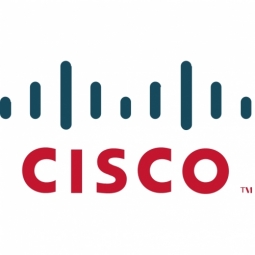 |
Cisco
Cisco designs and sells broad lines of products, provides services, and delivers integrated solutions to develop and connect networks around the world, building the Internet. Over the last 30 plus years, they have been the world’s leader in connecting people, things, and technologies - to each other and to the Internet - realizing their vision of changing the way the world works, lives, plays, and learns.Today, Cisco has over 70,000 employees in over 400 offices worldwide who design, produce, sell, and deliver integrated products, services, and solutions. Over time, they have expanded to new markets that are a natural extension of their core networking business, as the network has become the platform for automating, orchestrating, integrating, and delivering an ever-increasing array of information technology (IT)–based products and services.Subsidiaries/ Business Units: - Jasper - OpenDNS - CloudLock |
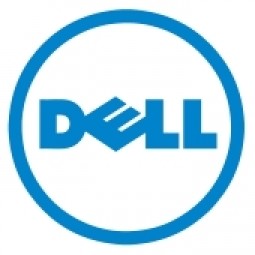 |
Dell Technologies
Dell Technologies is Dell, Dell EMC, Pivotal, RSA, SecureWorks, Virtustream, and VMware. We’re a collective force of innovative capabilities trusted all over the world to provide technology solutions and services that accelerate Digital Transformation. |
---nyse--ge_1.jpg) |
General Electric
GE is a diversified specialty equipment, infrastructure and financial services company. Their products and services range from aircraft engines, power generation, oil and gas production equipment, and household appliances to medical imaging, business and consumer financing and industrial products. GE believes new technologies will merges big iron with big data to create brilliant machines. This convergence of machine and intelligent data is known as the Industrial Internet, and it's changing the way we work. Year founded: 1892 Revenue: $148.5 billion (2014) NYSE: GE Featured Subsidiaries/ Business Units: - GE Digital - GE Predix - GE Intelligent Platform - Wurldtech |
 |
Altair
Altair is a leading provider of enterprise-class engineering software enabling innovation, reduced development times, and lower costs through the entire product lifecycle from concept design to in-service operation. Our simulation-driven approach to innovation is powered by our integrated suite of software which optimizes design performance across multiple disciplines encompassing structures, motion, fluids, thermal management, electromagnetics, system modeling and embedded systems, while also providing data analytics and true-to-life visualization and rendering. |
_1.jpg) |
Bosch
Bosch is an industry leader in automobile and industrial equipment, as well as consumer goods and building systems. Bosch operates via 440 subsidiaries in 60 countries; its core lines include mobility (auto) systems, from diesel/hybrid drive to steering, starter motors and generators, electronics, and brakes.Year founded: 1886Revenue: $58.7 billion (2014)Portfolio Companies:- Bosch Software Innovations- Rexroth- Deepfield Robotics- Escrypt- ProSyst |
Partners
 |
Cisco
Cisco designs and sells broad lines of products, provides services, and delivers integrated solutions to develop and connect networks around the world, building the Internet. Over the last 30 plus years, they have been the world’s leader in connecting people, things, and technologies - to each other and to the Internet - realizing their vision of changing the way the world works, lives, plays, and learns.Today, Cisco has over 70,000 employees in over 400 offices worldwide who design, produce, sell, and deliver integrated products, services, and solutions. Over time, they have expanded to new markets that are a natural extension of their core networking business, as the network has become the platform for automating, orchestrating, integrating, and delivering an ever-increasing array of information technology (IT)–based products and services.Subsidiaries/ Business Units: - Jasper - OpenDNS - CloudLock |
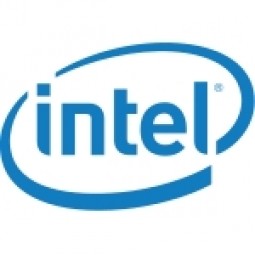 |
Intel
Intel designs, manufactures, and sells integrated digital technology platforms worldwide. The company's platforms are used in various computing applications comprising notebooks, desktops, servers, tablets, smartphones, wireless and wired connectivity products, Wearables, transportation systems, and retail devices. It offers microprocessors that processes system data and controls other devices in the system; chipsets, which send data between the microprocessor and input, display, and storage devices, such as keyboard, mouse, monitor, hard drive or solid-state drive, and optical disc drives; system-on-chip products that integrate its central processing units with other system components onto a single chip; and wired network connectivity products.Featured Subsidiaries/ Business Units:- Intel Inside- Intel Data Center Manager (DCM)- Saffron Technology- Wind River |
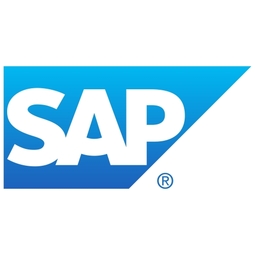 |
SAP
SAP is the leading provider of enterprise resource planning (ERP) software used to integrate back-office functions such as distribution, accounting, human resources, and manufacturing. The backbone of SAP's products has been its On-Premise offerings, spearheaded by its Business Suite, which includes ERP and customer relationship management (CRM) software, among others. Year founded: 1972 Revenue: $17.6 billion (2014) NYSE: SAP |


